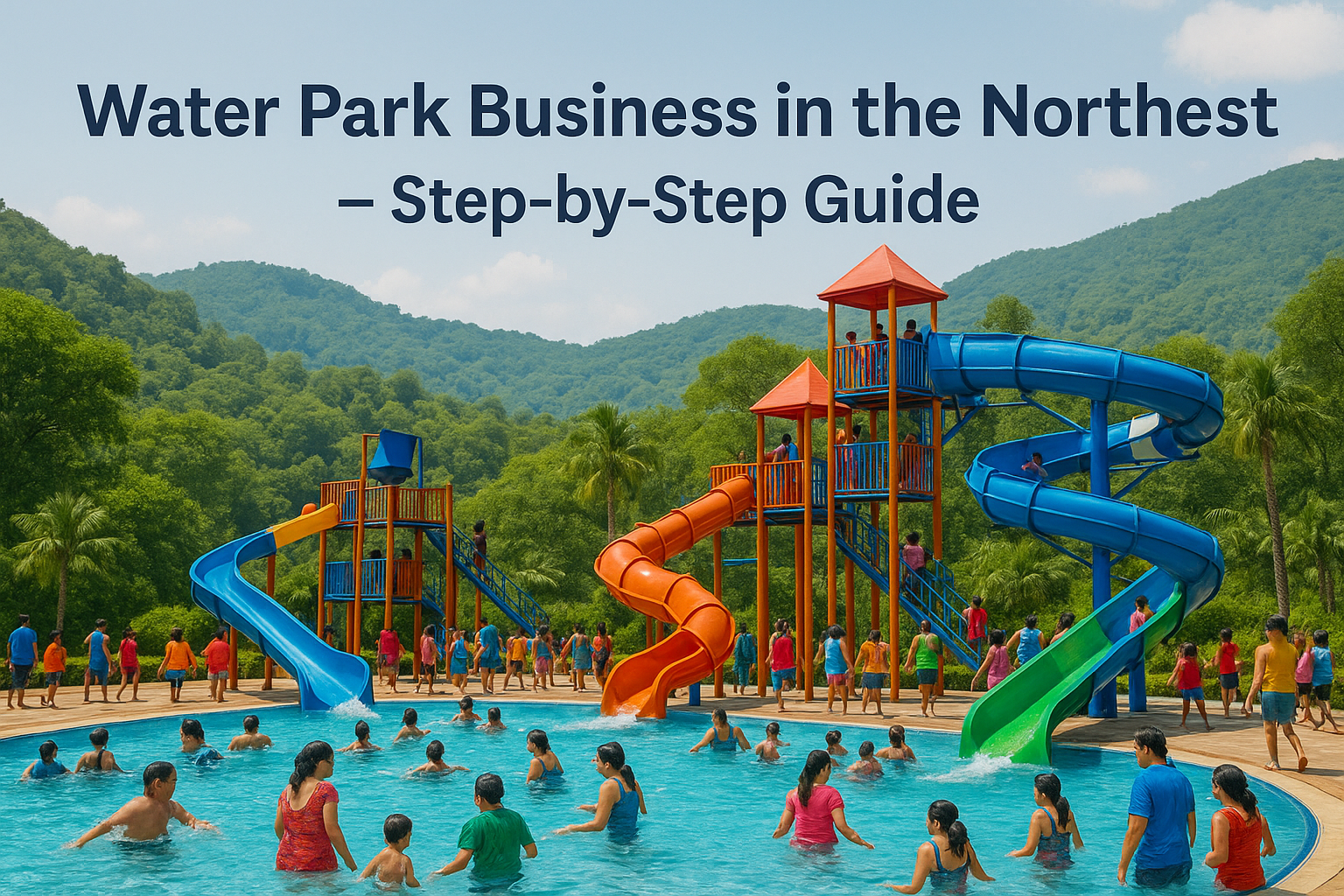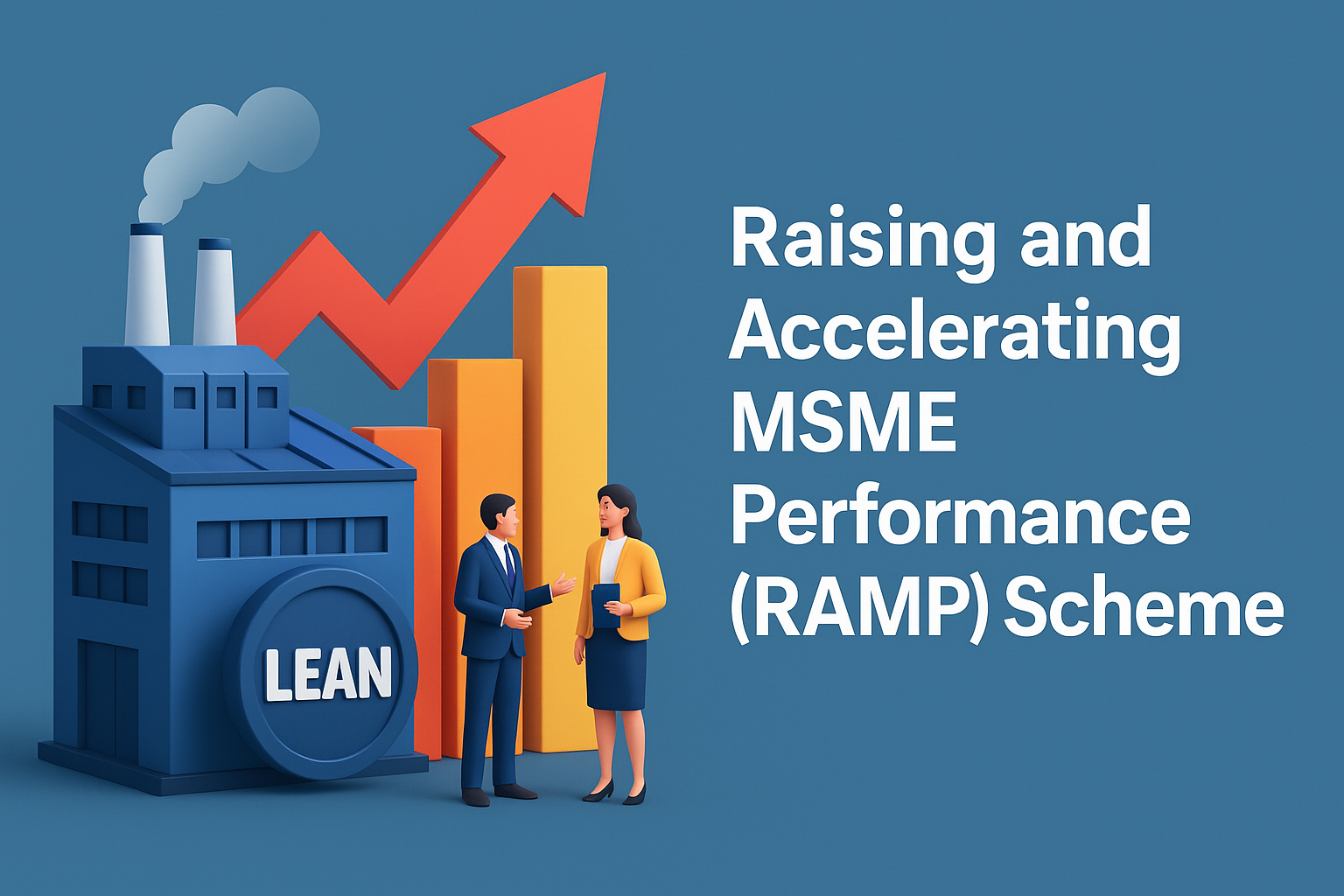Introduction: Quenching the Thirst for Opportunity in Northeast India
The demand for safe, reliable packaged drinking water is rapidly increasing across India, driven by growing health awareness, urbanization, and concerns about municipal water quality. In the picturesque and developing Northeast region, particularly in Arunachal Pradesh, this demand presents a significant entrepreneurial opportunity. With vast natural water resources and a growing population becoming more conscious of hygiene, establishing a packaged drinking water business here can be a highly profitable venture. This comprehensive guide, brought to you by Sigma Solutions, your trusted partner based in Itanagar, Arunachal Pradesh, will navigate you through every crucial step, ensuring your enterprise thrives.
Table of Contents
- Market Research & Feasibility Study: Understanding Northeast Demand
- Developing Your Comprehensive Business Plan: Your Blueprint for Purity
- Water Source Selection & Land Acquisition: The Foundation of Your Business
- Regulatory Compliance & Licensing: Navigating Essential Approvals
- Plant Setup & Machinery: Building Your Production Hub
- Water Treatment Process: Ensuring Purity & Quality
- Quality Control & Testing: Maintaining High Standards
- Packaging & Labeling: Presenting Your Product
- Distribution & Marketing: Reaching Your Customers
- Financial Planning & Investment: Calculating Your Returns
- Challenges & Mitigation in the Northeast: Overcoming Hurdles
- How Sigma Solutions Can Help: Your Partner in the Northeast
- Conclusion: A Clear Path to Profitability
- 10 FAQs about Starting a Packaged Drinking Water Business in the Northeast
1. Market Research & Feasibility Study: Understanding Northeast Demand
A profitable packaged drinking water business begins with a thorough understanding of the local market dynamics in Arunachal Pradesh and the broader Northeast.
- Identify Your Target Market: Who are your potential customers? Are they urban households, offices, hotels, restaurants, educational institutions, travelers, or government establishments? Assess their consumption patterns, preferences for bottle sizes (e.g., 500ml, 1L, 20L jars), and willingness to pay.
- Analyze Demand Drivers: Factors like increasing tourism, inadequate public water supply infrastructure in some areas, rising health consciousness, and a growing middle class with higher disposable incomes are key drivers in the Northeast.
- Assess Competition: Identify existing local and national brands. Analyze their pricing, distribution networks, product quality, and marketing strategies. This will help you identify market gaps and formulate a unique selling proposition (USP) for your brand in Arunachal Pradesh or other Northeast states.
- Logistical Considerations: Evaluate the cost and ease of transporting raw materials and finished products within the Northeast region, considering terrain and connectivity.
2. Developing Your Comprehensive Business Plan: Your Blueprint for Purity
A meticulously crafted business plan is indispensable. Sigma Solutions can assist you in preparing a detailed plan that attracts investors and guides your operations.
- Executive Summary: A concise overview of your business concept, market opportunity, and financial projections.
- Company Description: Define your brand’s vision, mission, and values, emphasizing commitment to purity and local service in the Northeast.
- Market Analysis: Detail your research findings on demand, competition, and target segments in Arunachal Pradesh and the Northeast.
- Product & Services: Specify the types and sizes of packaged water bottles or jars you will offer.
- Operational Plan: Outline the plant layout, production process, quality control measures, and waste management.
- Marketing & Sales Strategy: How will you build brand awareness and distribute your product in the unique Northeast market?
- Management Team: Highlight the expertise of your core team in water technology, operations, and business management.
- Financial Plan: Include detailed projections for startup costs (CapEx), operational expenses (OpEx), revenue forecasts, break-even analysis, and funding requirements.
3. Water Source Selection & Land Acquisition: The Foundation of Your Business
The quality and reliability of your water source are paramount.
- Source Identification: Identify a reliable source of raw water – this could be groundwater (borewell), surface water (river/lake, with proper treatment), or municipal supply (requiring further purification). Groundwater is often preferred for its consistent quality.
- Water Quality Testing: Conduct comprehensive chemical, physical, and microbiological analyses of the potential water source through a NABL-accredited laboratory. This is critical to determine the necessary treatment processes and ensure compliance with FSSAI standards.
- Land Acquisition/Lease: Select a site that is free from pollution, has good drainage, and is easily accessible for transportation. For an illustrative purpose, a small to medium-sized plant might require 5,000 to 15,000 sq ft of land. Ensure the land is zoned for industrial or commercial use in Arunachal Pradesh or the relevant Northeast state.
- Proximity to Market: While not always feasible in remote areas, proximity to your primary distribution hubs or target markets can significantly reduce transportation costs.
4. Regulatory Compliance & Licensing: Navigating Essential Approvals
Navigating the regulatory landscape is a critical step. Sigma Solutions, with its local expertise in Itanagar, Arunachal Pradesh, can guide you through the necessary permits.
- FSSAI License: This is the most crucial license. Packaged drinking water is now considered a “High Risk Food Category” by FSSAI, making their license mandatory. You will need to apply for a Basic, State, or Central FSSAI License based on your projected turnover. This involves online application, submission of detailed documents (including water test reports from an FSSAI-approved lab), and regular inspections.
- BIS Certification (IS 14543): While recent FSSAI notifications indicate that BIS certification is no longer mandatory for sales, adherence to the Bureau of Indian Standards (IS 14543) for Packaged Drinking Water (other than natural mineral water) is still highly recommended for quality assurance, consumer trust, and potential future regulatory shifts. Maintaining BIS standards ensures your product meets rigorous quality parameters.
- NOC for Groundwater Extraction (CGWA/State GW Authority): If you plan to use a borewell, you must obtain a No Objection Certificate from the Central Ground Water Authority (CGWA) or the respective State Ground Water Authority. States in the Northeast are generally in “Safe” groundwater categories, which may facilitate this process, but due diligence is essential.
- Consent to Establish (CTE) & Consent to Operate (CTO): Obtain these from the State Pollution Control Board (SPCB) of Arunachal Pradesh or the relevant Northeast state under the Water (Prevention and Control of Pollution) Act, 1974.
- Business Registration: Register your company (e.g., Proprietorship, Partnership, Private Limited) with the Ministry of Corporate Affairs.
- GST Registration: Obtain Goods and Services Tax registration.
- Factory License: Obtain this from the local Department of Factories.
- Trademark Registration: Protect your brand name and logo.
- Other Local Permits: Depending on the specific location in the Northeast, additional local municipal or panchayat permits might be required.
Sigma Solutions strongly advises consulting with local legal experts and business consultants familiar with the specific regulatory framework in Arunachal Pradesh and the wider Northeast region.
5. Plant Setup & Machinery: Building Your Production Hub
The choice of machinery significantly impacts production capacity, efficiency, and product quality.
- Plant Layout Design: Design an efficient layout that ensures a smooth flow from raw water intake to packaging and dispatch, maintaining strict hygiene zones.
- Essential Machinery:
- Water Treatment Plant (WTP): Includes filtration (sand, carbon), Reverse Osmosis (RO) unit, UV disinfection, and ozonation system. This is the heart of your operation.
- Bottle Rinsing, Filling & Capping Machine: Can be semi-automatic (lower initial cost, higher labour) or fully automatic (higher initial cost, lower labour, faster production).
- Labeling Machine: Automatic or semi-automatic.
- Shrink Wrapping Machine: For packaging multiple bottles.
- Blow Moulding Machine (Optional): If you plan to manufacture your own PET bottles. This can save costs in the long run, but requiresa higher initial investment.
- Water Storage Tanks: For raw water and treated water (food-grade material).
- Pumps & Piping: Food-grade materials to prevent contamination.
- Laboratory Equipment: For in-house quality control testing.
- Illustrative Costs: For a semi-automatic plant with essential machinery, the cost could range from ₹10 lakh to ₹25 lakh. A fully automatic plant with higher capacity could range from ₹30 lakh to ₹70 lakh or more. These figures are illustrative and depend heavily on capacity and automation levels.
6. Water Treatment Process: Ensuring Purity & Quality
The core of your business lies in the effectiveness of your water purification process.
- Pre-Treatment: Involves physical filtration (sand, carbon filters) to remove suspended particles, odor, and chlorine.
- Reverse Osmosis (RO): A crucial step that removes dissolved solids, heavy metals, and most contaminants.
- UV Sterilization: Ultraviolet (UV) light is used to destroy bacteria, viruses, and other microorganisms.
- Ozonation: Ozone gas is used as a powerful disinfectant, ensuring microbiological purity and enhancing shelf life. It also adds oxygen to the water.
- Remineralization (Optional): Some plants might add food-grade minerals back to the water after RO to improve taste and nutritional value, adhering to FSSAI guidelines.
- Final Filtration: Passing the treated water through micron filters before bottling to ensure clarity.
7. Quality Control & Testing: Maintaining High Standards
Consistent quality is non-negotiable for consumer trust and regulatory compliance.
- In-House Laboratory: Set up a basic in-house lab for daily monitoring of critical parameters like pH, Total Dissolved Solids (TDS), turbidity, and chlorine levels. Train dedicated personnel for these tests.
- External Laboratory Testing: It is mandatory to send samples from every batch of your packaged drinking water to an FSSAI-approved (NABL-accredited) laboratory for comprehensive testing, including microbiological, chemical, and physical parameters, ensuring compliance with FSSAI standards (and BIS IS 14543 if you choose to adhere to it).
- Raw Material Testing: Regularly test your raw water source and packaging materials (bottles, caps, labels) to ensure they meet food-grade standards and do not introduce contaminants.
- Hygiene Standards: Implement rigorous hygiene and sanitation protocols throughout the plant, including personnel hygiene, equipment cleaning, and pest control. FSSAI places high importance on hygienic conditions.
8. Packaging & Labeling: Presenting Your Product
Your packaging and labeling are your brand’s face to the consumer and must comply with FSSAI regulations.
- Bottle Material: Use food-grade PET (Polyethylene Terephthalate) bottles, which are standard for packaged drinking water. Explore options for sustainable and recyclable packaging materials to align with environmental concerns.
- Bottle Sizes: Offer a range of sizes (e.g., 200ml, 500ml, 1L, 2L, 5L, 20L jars) to cater to diverse customer needs in households, offices, and events.
- Labeling Requirements (as per FSSAI):
- Product name (“Packaged Drinking Water”)
- Name and complete address of the manufacturer
- Brand name (if any)
- Lot/Batch number
- Date of packaging
- “Best Before” date
- FSSAI logo and your FSSAI license/registration number
- Net quantity in liters or milliliters
- No health claims are permitted on the label.
- Branding & Design: Develop an attractive, unique, and memorable brand logo and label design that conveys purity and freshness, resonating with the Northeast consumer.
9. Distribution & Marketing: Reaching Your Customers
An effective distribution and marketing strategy is crucial for market penetration and sales growth in the Northeast.
- Distribution Channels:
- Direct Sales: To offices, institutions, and residential areas (especially for 20L jars).
- Retail Network: Partner with local grocery stores, supermarkets, convenience stores, and pan shops across Arunachal Pradesh and other accessible areas in the Northeast.
- HoReCa (Hotels, Restaurants, Cafes): Target the hospitality sector, which has high demand for bottled water.
- Wholesale & Distributors: Establish a network of distributors to reach wider geographic areas.
- Online Platforms: Explore local e-commerce or quick commerce tie-ups for home delivery.
- Branding & Promotion:
- Emphasize Purity & Quality: Highlight your rigorous purification process and adherence to FSSAI standards.
- Local Connect: Use local vernacular in marketing, emphasize your regional presence, and participate in local events.
- Digital Marketing: Utilize social media platforms to reach younger demographics.
- Promotional Offers: Introduce launch offers, loyalty programs, or combo deals.
- Tie-ups: Collaborate with local schools, colleges, and event organizers for bulk orders.
10. Financial Planning & Investment: Calculating Your Returns
The packaged drinking water business requires a significant upfront investment.
- Capital Expenditure (CapEx) Illustrative Breakdown:
- Land/Factory Shed (Purchase or Rent): Varies greatly by location. Renting can reduce initial CapEx.
- Machinery & Equipment: ₹10 lakh – ₹70 lakh (depending on automation and capacity).
- Water Source (Borewell & Setup): ₹1 lakh – ₹3 lakh.
- Laboratory Setup: ₹2 lakh – ₹4 lakh.
- Licenses & Approvals: ₹2 lakh – ₹4 lakh (including FSSAI, CGWA, SPCB, etc.).
- Initial Raw Materials (Preforms, caps, labels): ₹2.5 lakh – ₹5 lakh.
- Building & Interior Works: ₹5 lakh – ₹12 lakh.
- Office Setup & Furniture: ₹50,000 – ₹1.5 lakh.
- Total Initial Investment: For a small to medium-scale plant, expect a range of ₹40 lakh to ₹90 lakh.
- Operational Expenditure (OpEx):
- Raw material costs (preforms, caps, labels, chemicals)
- Electricity & water consumption
- Staff salaries & wages
- Maintenance & repairs
- Testing costs (external lab)
- Marketing & distribution expenses
- Rent (if applicable)
- Funding: Explore promoter equity, bank loans (prepare a detailed project report), or government schemes that promote small and medium enterprises in the Northeast.
- Profitability: The packaged drinking water market in India is growing at over 10% CAGR. With efficient operations, strong distribution, and quality control, profit margins can be healthy.
11. Challenges & Mitigation in the Northeast: Overcoming Hurdles
Operating in the Northeast presents unique challenges that require strategic solutions.
- Logistics & Transportation: Hilly terrain and varying road conditions can increase transportation costs and delivery times. Plan for efficient logistics, potentially through local warehousing or strong distributor partnerships.
- Power Supply: Reliability of electricity can be an issue in some remote areas. Invest in robust backup power generators to ensure uninterrupted production.
- Skilled Workforce: Finding and retaining skilled labor for plant operations, maintenance, and quality control might be challenging. Invest in comprehensive training programs for the local workforce.
- Environmental Concerns: Ensure sustainable water extraction practices and responsible waste management (especially plastic waste) to comply with environmental regulations and gain public acceptance. Proactive community engagement can be beneficial.
- Market Awareness & Trust: While demand is growing, building trust in a new brand among consumers in relatively less-explored markets can take time. Consistent quality and transparent communication are key.
- Seasonality: Demand might fluctuate with seasons. Plan production and distribution accordingly.
12. How Sigma Solutions Can Help: Your Partner in the Northeast
Based in Itanagar, Arunachal Pradesh, Sigma Solutions is uniquely positioned to be your invaluable partner in establishing a profitable packaged drinking water business across Arunachal Pradesh and the entire Northeast region. We offer tailored expertise to navigate the specific nuances of this market.
- Feasibility Studies & Market Analysis: In-depth research and analysis specifically for the Northeast packaged water market.
- Business Plan Development: Crafting comprehensive and investor-ready business plans.
- Liaison & Regulatory Guidance: Expertly navigating the complex permit and licensing process with local and state authorities in Arunachal Pradesh and across the Northeast, including FSSAI, CGWA, and SPCB.
- Financial Advisory: Assisting with financial projections, funding strategies, and connecting you with potential lenders or investors.
- Project Management: Guiding you through plant design, machinery selection, and installation, connecting you with reliable suppliers.
- Local Market Insights: Providing crucial insights into local consumer behavior, distribution networks, and effective marketing channels specific to the Northeast.
13. Conclusion: A Clear Path to Profitability
The packaged drinking water business in the Northeast of India, with a strong focus on Arunachal Pradesh, offers a promising landscape for entrepreneurs. By combining meticulous planning, stringent quality control, adherence to regulatory compliance, and a deep understanding of the local market’s unique characteristics, your venture can not only achieve significant profitability but also contribute to public health by providing safe drinking water. Partner with experienced consultants like Sigma Solutions to ensure your business journey is smooth, compliant, and ultimately, a resounding success.
10 FAQs about Starting a Packaged Drinking Water Business in the Northeast
- Is BIS certification mandatory for packaged drinking water in India?
As per recent FSSAI notifications (October 2024 / February 2025), BIS certification is no longer mandatory for sale. However, an FSSAI License is crucial, and adherence to BIS (IS 14543) standards is highly recommended for quality. - What is the minimum investment for a packaged drinking water plant in the Northeast?
For a small to semi-automatic plant, the total investment can range from ₹40 lakh to ₹90 lakh, depending on capacity and scope. - Which are the most important licenses for this business?
The FSSAI License, NOC for Groundwater Extraction (from CGWA or State GW Authority), and Consent to Establish/Operate from the State Pollution Control Board are among the most critical. - How long does it take to set up a packaged drinking water plant?
Typically, it can take 6-18 months, including regulatory approvals, civil works, machinery installation, and initial testing. - What is the role of Sigma Solutions in this business?
Sigma Solutions, based in Itanagar, Arunachal Pradesh, offers comprehensive support, including feasibility studies, business plan development, regulatory guidance, financial advisory, and project management tailored for the Northeast market. - Do I need to test water samples regularly?
Yes, it is mandatory to send samples from every batch to an FSSAI-approved (NABL-accredited) laboratory for comprehensive testing to ensure compliance and quality. - What are the main challenges for this business in the Northeast?
Challenges include logistics and transportation, reliable power supply, sourcing skilled labour, and managing plastic waste. - Can I use any water source for packaged drinking water?
No, the raw water source must be thoroughly tested for quality and approved. It then undergoes rigorous treatment to meet FSSAI standards before packaging. - What are the key components of a water treatment plant?
Key components typically include filtration units (sand, carbon), a Reverse Osmosis (RO) system, UV disinfection, and ozonation. - How can I make my packaged water brand stand out in the Northeast market?
Focus on consistent quality, attractive and compliant packaging, efficient distribution networks, localised marketing, and potentially exploring sustainable packaging options.





